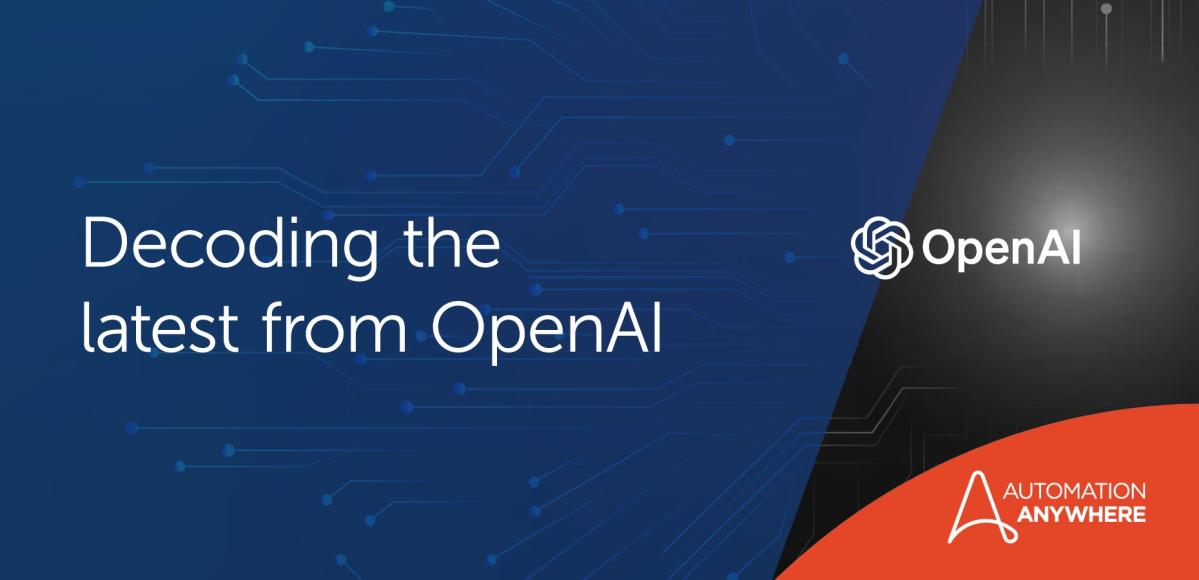- Login
- Support

-
Have a question? Our team is here to help guide you on your automation journey.
-
Browse documentation on how to install, configure, and use our products effectively.
-
Explore support plans designed to match your business requirements.
-
- Search
- Products
Powered By
Automation Success Platform Create a system of work with our connected suite of intelligent automation apps and tools to discover, automate, scale and engage. Explore our Platform Explore our Platform
- Discover
- Automate
- Scale
- Engage
- Solutions
Featured Solution
Google Cloud Google Cloud and Automation Anywhere empower enterprises to fast-track their RPA journey Google Cloud
Featured Solution
 Amazon Web Services Streamline workflows, reduce costs, and make automating even easier when you combine the Automation Success Platform with AWS Amazon Web Services
Amazon Web Services Streamline workflows, reduce costs, and make automating even easier when you combine the Automation Success Platform with AWS Amazon Web Services- Automation Solutions
Accelerate your business with a digital workforce
- By Industry
- By Function
- By Technology
- Resources
Get Community Edition: Start automating instantly with FREE access to full-featured automation with Cloud Community Edition.
Featured
 Now & Next: State of Intelligent Automation Report Learn how automation leaders are embracing Intelligent Automation & generative AI for increased productivity, innovation & growth. Download Report Download Report
Now & Next: State of Intelligent Automation Report Learn how automation leaders are embracing Intelligent Automation & generative AI for increased productivity, innovation & growth. Download Report Download Report - Customers
Featured case study
 Leading Broker-dealer Osaic Transforms Business Through Intelligent Automation. Explore case study Explore case study
Leading Broker-dealer Osaic Transforms Business Through Intelligent Automation. Explore case study Explore case study - Company
Get in touch with us Get help, know more, learn, ask questions, or just say Hi! Contact Us Contact Us
- Get To Know Us
- Announcements
- Society
Blog
What the Latest Generative AI Launches Mean for Enterprise Transformation
Share this:

The breakneck pace of announcements and innovation in AI has hardly slowed down since almost a year ago with the launch of ChatGPT. The last few weeks alone have seen major events like OpenAI's DevDay and the launch of the Presidential Executive Order on AI. While much remains unknown about where these technologies will go in the future, one thing is increasingly evident: they will significantly impact enterprise automation, enabling companies to automate a broader array of processes more comprehensively than ever before.
Seeing the impact of generative AI
At Automation Anywhere, we've witnessed a tangible shift in the business landscape as companies eagerly integrate generative AI into their operations, particularly within finance and customer service domains. This strategic move has translated into some substantial returns, exemplified by early success stories such as Petrobras, who shared their remarkable outcomes on stage at our Imagine conference in September. Notably, these enterprises have realized millions in returns within remarkably short time frames—with some on track to capture billions of dollars in value.
Moreover, the advent of generative AI is not just a boon for the bottom line; it's a game-changer in democratizing automation. We are seeing generative AI start to reduce barriers to automation development and allow more people in organizations to build automations more quickly, helping to accelerate the trend toward increased automation.
Understand the latest generative AI advancements and their limits
OpenAI's recent announcements, unveiled at their first developer conference, DevDay, showed how some of the building blocks needed to achieve these advancements in automation are continuing to evolve to support these enterprise automation trends. These announcements ranged from improvements to their GPT-4 model to the introduction of GPTs and their new Assistants API.
While the model announcements included a lot of anticipated improvements, the announcements about GPTs and the Assistants API were especially interesting because they consolidated capabilities that many developers are using today to perform targeted tasks or build agents with LLMs. GPTs and the Assistants API combine concepts of specialized instructions, knowledge retrieval, and plugins to generate purpose-specific agents with a language interface. This was an exciting announcement because it standardized a framework that many people, even non-developers, can use to build task-specific agents with generative AI and should accelerate development in this space.
When used for anything beyond narrowly scoped tasks, though, these agents still have many of the limitations for enterprises we have seen with previous open-source agent frameworks like AutoGPT, in that they are often unreliable, prone to going off track, and can hallucinate. However, this agent approach that combines retrieval and function calling has proved quite useful when performing more narrowly defined tasks with the necessary guardrails and grounding in place for the inputs and outputs to the agent.
Harnessing generative AI in enterprise workflows
In collaboration with our customers, we have been applying these concepts in complex end-to-end enterprise automations, such as for automating customer support ticket resolution, which uses data retrieval plus LLMs as one sub-task of the overall automation. This is where the Automation Success Platform comes in, putting AI to work. The key to the success of this use case is that the overall orchestration of this multi-step, multi-system process is done through our enterprise orchestration platform, which has the proper tools, guardrails, governance, analytics, integrations, and more that are necessary to deploy a sophisticated process like this to production.
At the same time, this overall process can tap into the AI necessary to retrieve relevant knowledge based on a customer query and use an LLM to generate a personalized response to the customer question. With the new announcements from OpenAI, there is now a simplified way to bring this one piece of the solution into an overall enterprise process.
There are many other examples that we are developing with customers that may benefit from new capabilities similar to what OpenAI announced at their DevDay. During our Imagine conference, we highlighted a shipment issue resolution process that required collecting data from email, Salesforce, SAP, MS Teams, and other systems, using AI to extract data and insights from unstructured data, and routing work for approvals.
This critical business process required the end-to-end orchestration across systems and users that our platform seamlessly provides. It also leveraged generative AI to analyze specific information around product inventories to make a suggestion for fulfilling the customer's order. This, again, is an example where a more narrowly scoped AI agent could help in generating this recommendation as part of the overall workflow.
New conversational experiences
The other pattern we see generative AI being used for is as the front-end conversational interface to automation and information for both business users and developers. We have already released our Co-Pilot for automators, which is able to turn natural language into automation and speed up the development of automations by over 55%. This leverages many of the same concepts used by the new GPT and Assistants products but with additional capabilities to make it more robust for the specific task of creating business automation workflows. It also uses our custom-trained model informed from over 100M automation runs to output enterprise automation workflows, such as for order management processes.
To improve team productivity at Automation Anywhere, we have also launched an internal AI assistant, Jarvis, to help employees get answers to business-related questions and launch automated business processes on our platform. With the capabilities that Open AI announced, we expect more people will have the tools to create basic conversational assistants to boost personal productivity and can use these as building blocks for unlocking end-to-end workflow automation on our platform.
Put AI to work with the most advanced Intelligent Automation platform
From unlocking entirely new use cases and millions of dollars in business impact to changing the way that users interact with technology, this continues to be an exciting time for technology and enterprise automation in particular. Open AI's announcements last week further illustrated the potential of these new AI models and will only accelerate many of the patterns that we are already seeing built into automation workflows at the leading companies that we work with. For every company looking to transform the way you work, it is a critical time to ensure you have the right automation platform to bring these new technologies into your business-critical workflows.
Learn how you can put AI to work today in our Imagine 2023 sessions.
About Peter White

Peter White is the SVP of Emerging Products at Automation Anywhere.
Subscribe via EmailView All Posts LinkedInAuthor's recent posts
Get to know the Automation Success Platform.

For Students & Developers
Start your RPA journey instantly with FREE access to Community Edition



